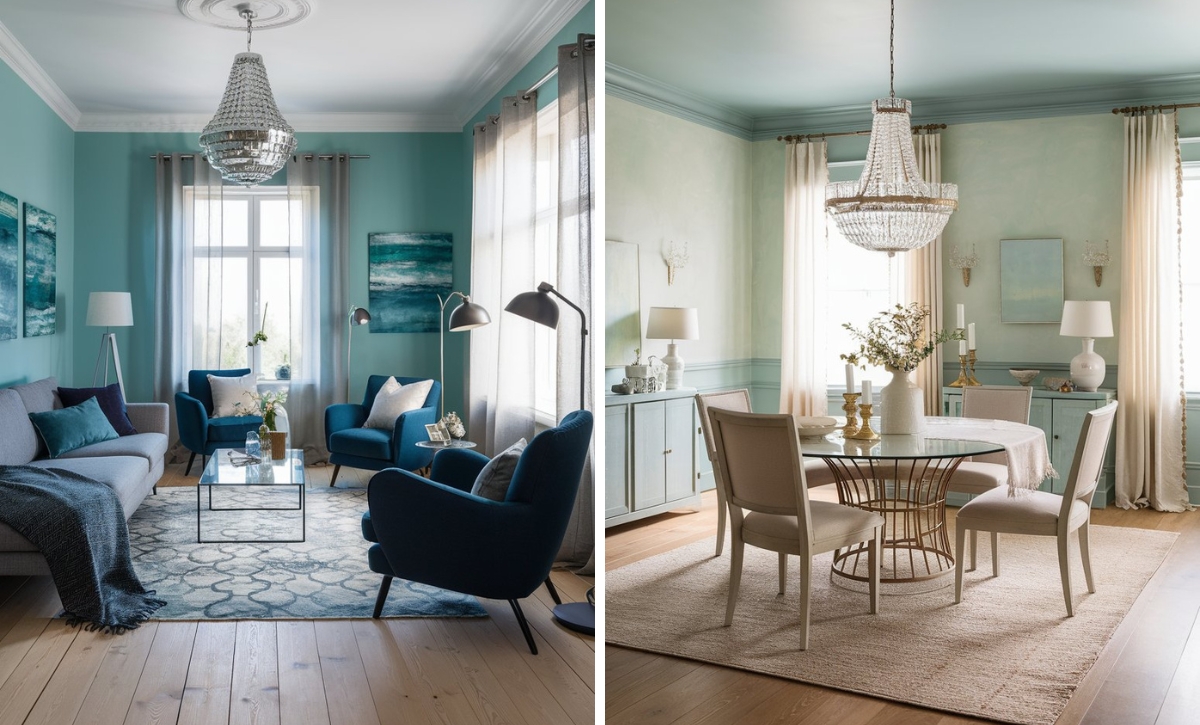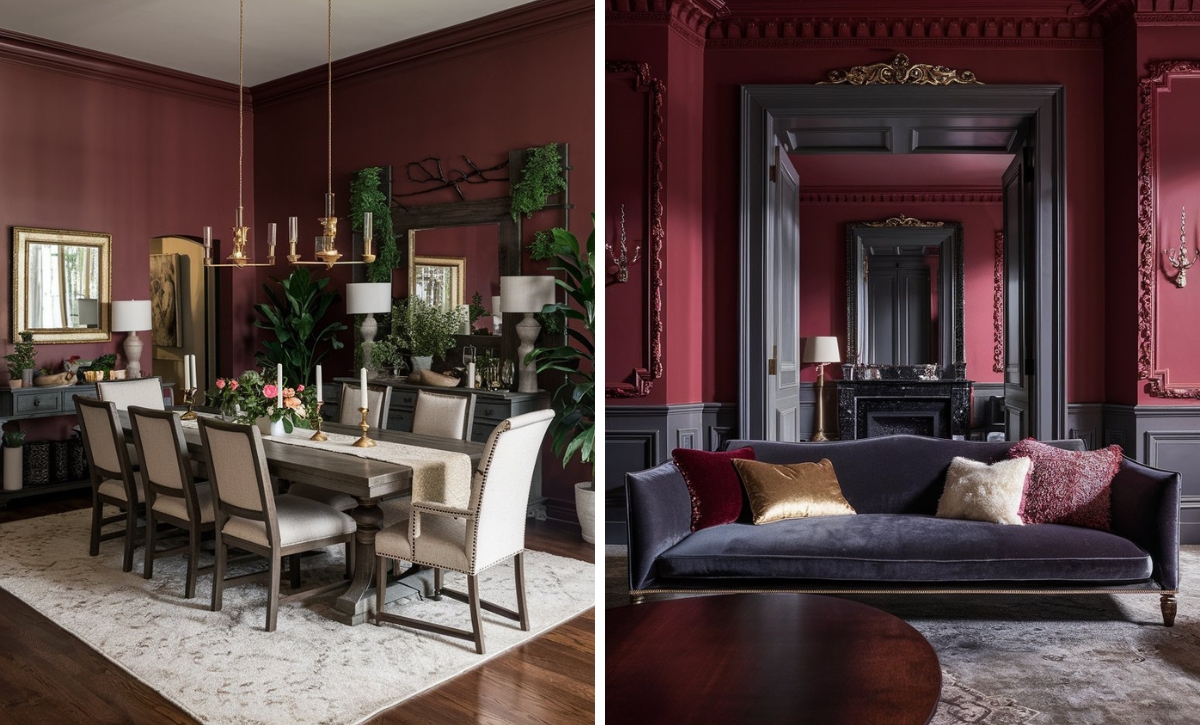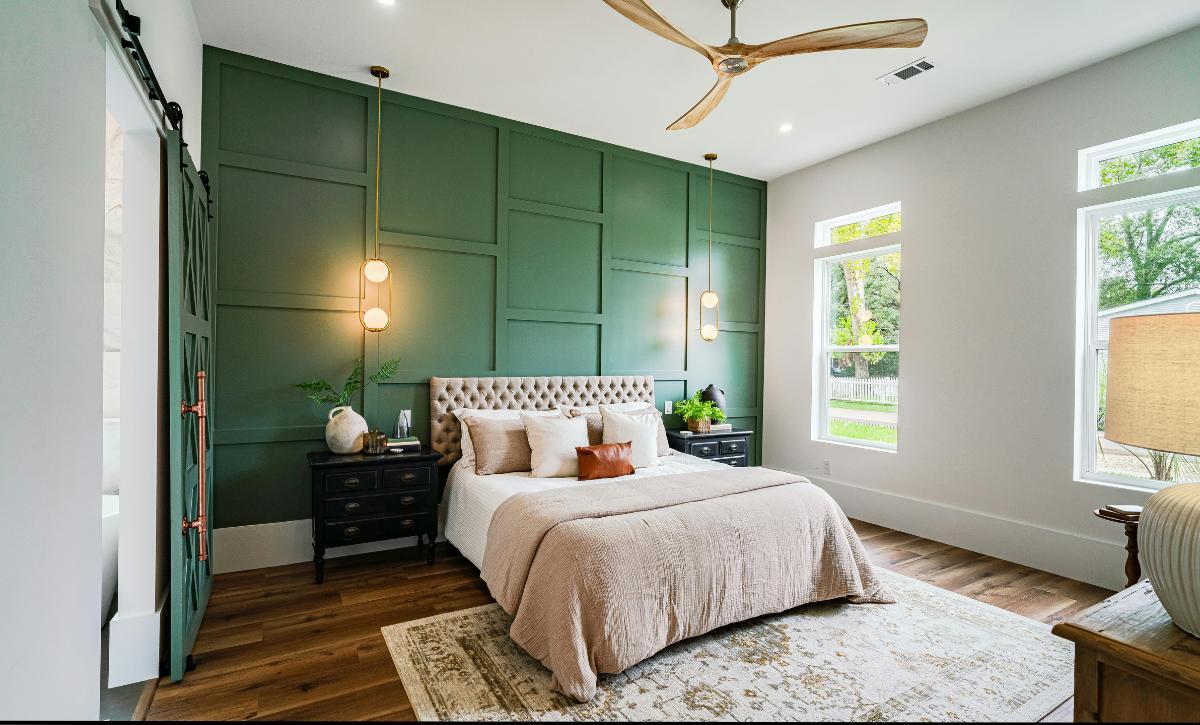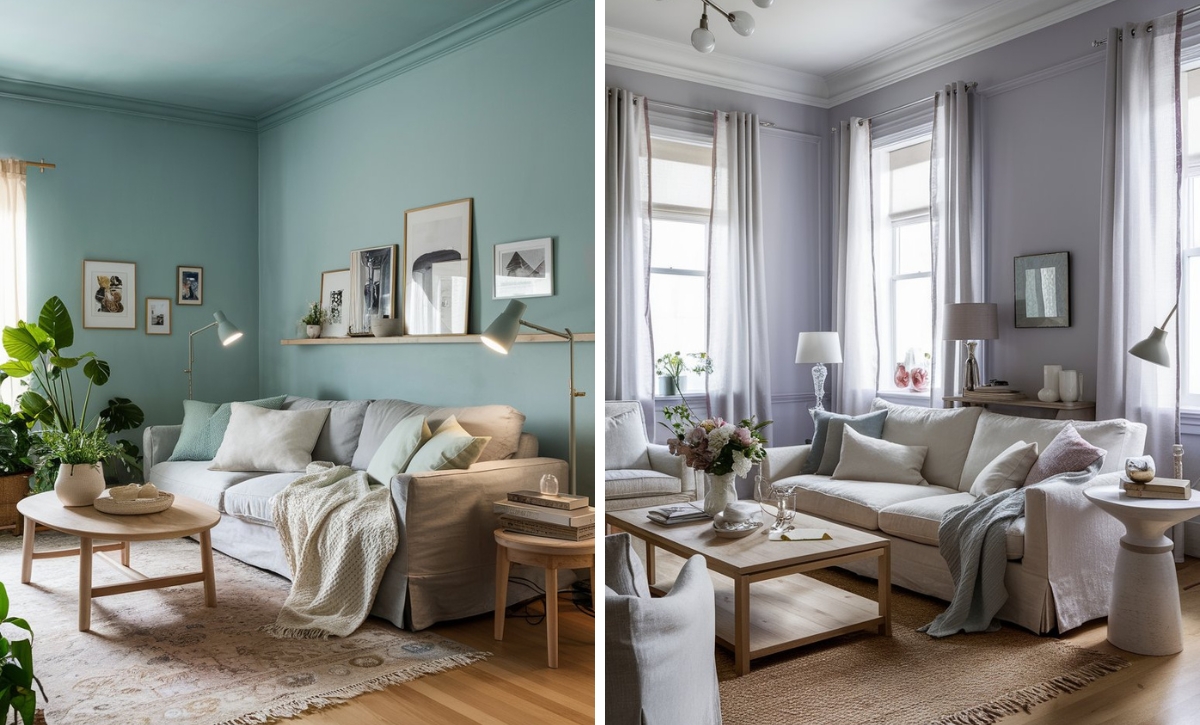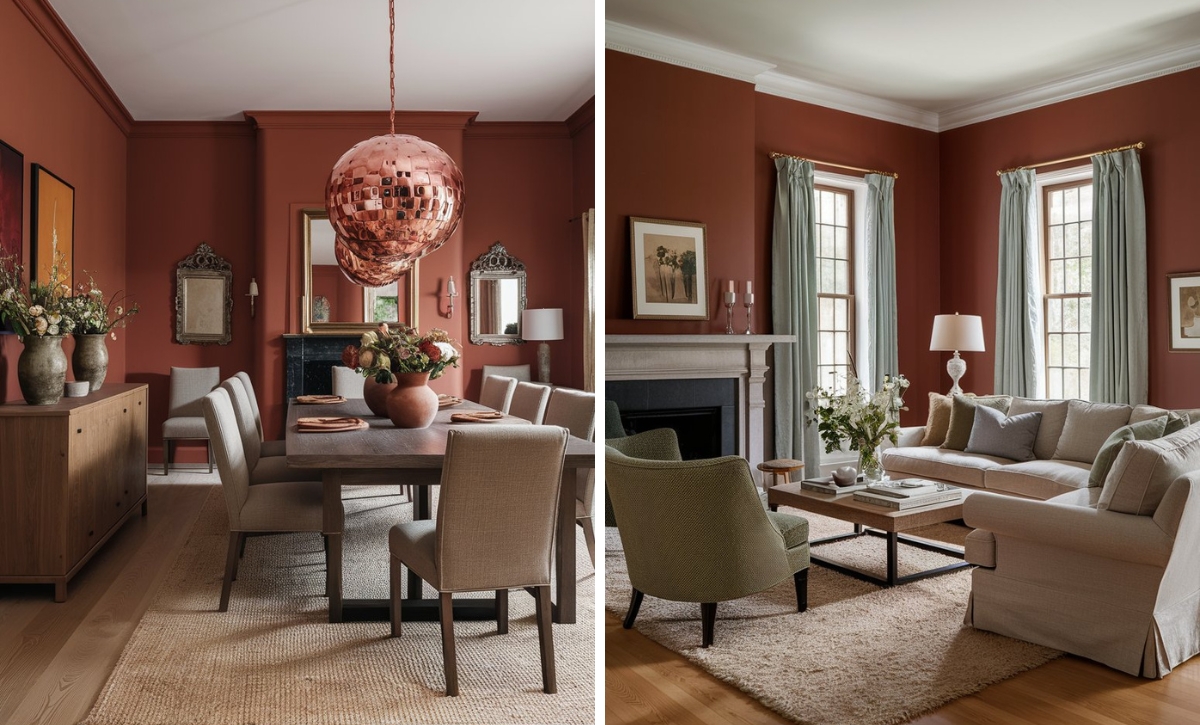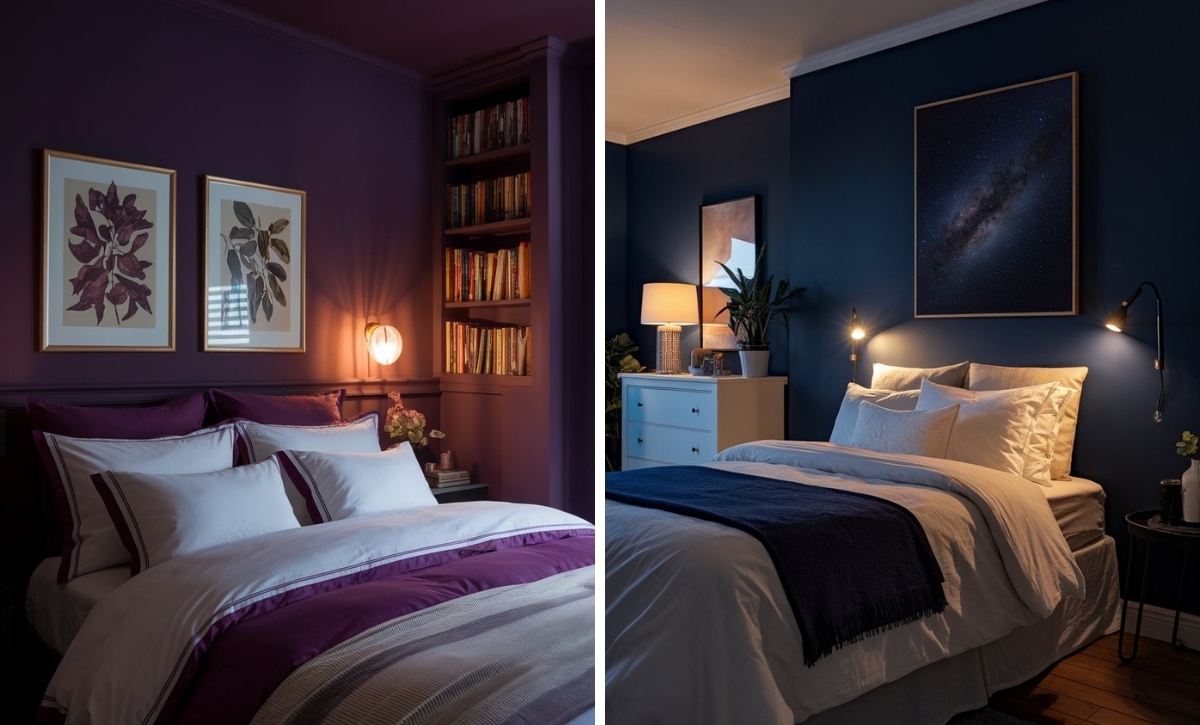Whether it’s adding a soothing accent wall, utilizing ambient lights, or cozying up the bed with a bedspread, we all aim to create a relaxing bedroom atmosphere. Indoor houseplants are one of the best ways to enhance your bedroom’s decor, as well as its environment.

One big challenge most people face when choosing indoor plants is selecting the right one that will thrive in their specific environment and keeping the plant healthy. For instance, most blooming plants typically prefer more light by a window, so placing them near south or east-facing windows would be ideal.
On the other hand, green plants prefer ambient room light. The best way to solve this headache is doing enough research on the houseplant you want beforehand, and ensuring you pick a plant that you’ll love and want to care for.
We’ve compiled some of the best houseplants that are guaranteed to add color, texture, and life to your bedroom; not to mention improve your space’s air quality, while requiring minimal effort for maintenance.
Take a look!
1. Prayer Plant
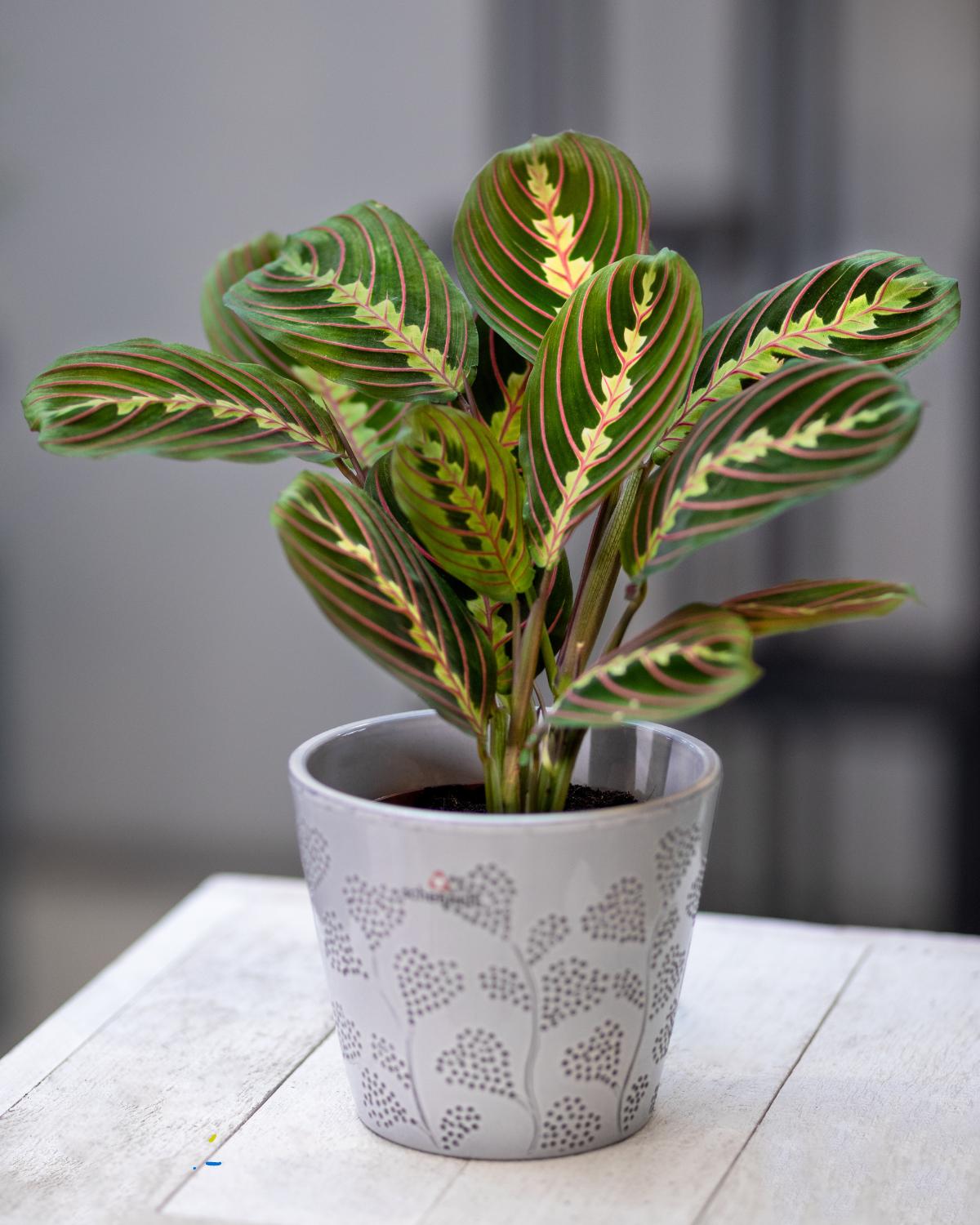
Calatheas (peacock plants) have some of the most decorative foliage, with their immaculately striped leaves coming in shades of white, green, pink, and yellow. Their leaves are known for lying flat during the day and folding upwards at night, hence the name “prayer plant”—it’s almost as if the plant is praying!
Prayer plants thrive in summer weather since they’re big fans of warm, humid conditions, with the ideal temperature being between 64 – 73℉ (18 – 24℃). They also benefit from misting every now and then.
One common mistake associated with calatheas is overwatering. The amount of sunlight your houseplant receives during the day is actually more important than following a strict watering routine. A common sign of overwatered plants is the yellowing of leaves.
Place your prayer plant in direct but not strong light—preferably near a north or east facing window—for the best leaf coloring. Also, ensure the soil dries out between waterings to minimize the risk of overwatering.
2. Monstera Deliciosa
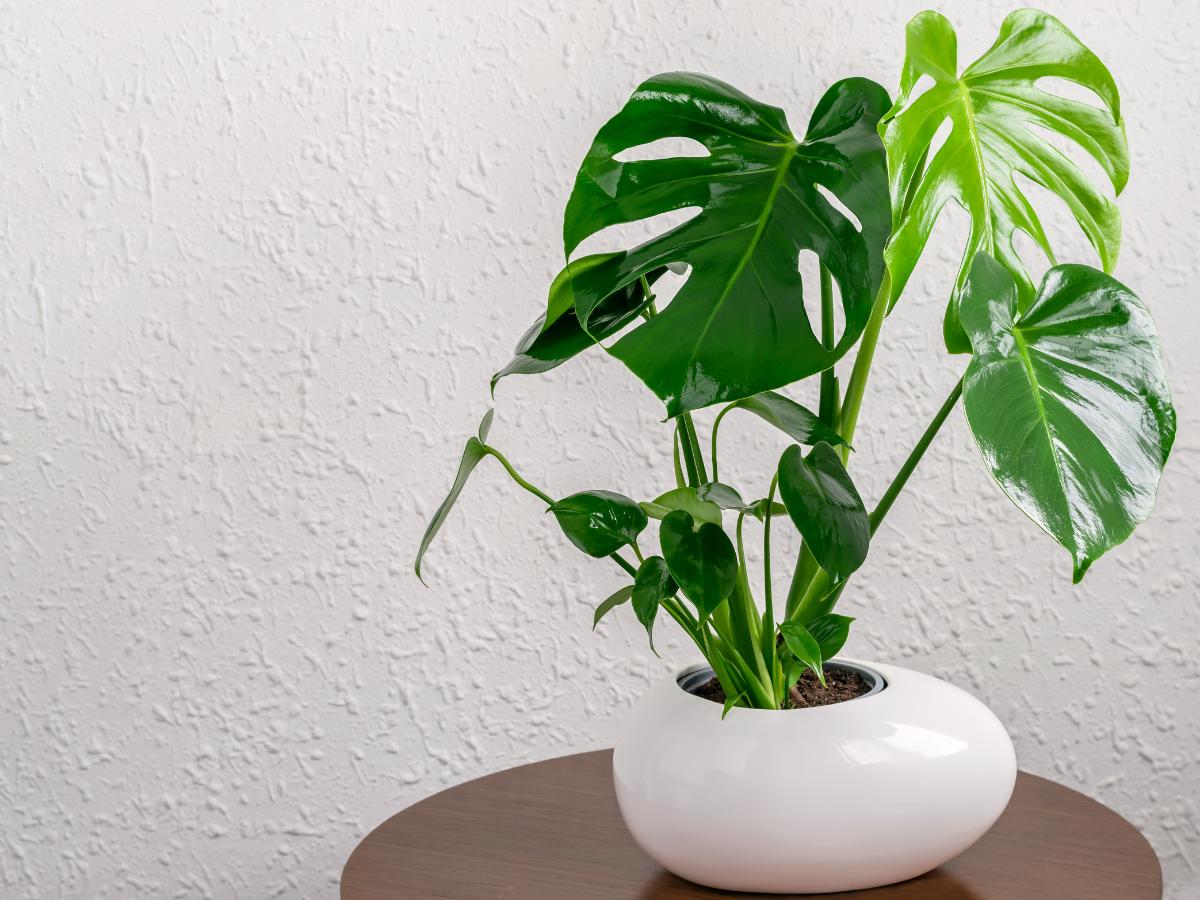
You’ve probably come across the glossy leaves of Monstera deliciosa (commonly known as the Swiss cheese plant) while scrolling through Instagram—and what’s not to like about the tropical vibes that this beauty brings!
Monsteras are native to Central America and Mexico, especially in rainforests, where there’s bright light shaded by tall trees, heavy, occasional rainfall, and high humidity. You only need to replicate these warm and humid conditions, and you’ll have a fantastic indoor plant that makes a big impact.
Moss cover poles will also come in handy when training these climbers, mimicking their natural tendency to cling onto trees as they do in the wild.
Monsteras prefer warm temperatures between 64 – 80℉ (18 – 27℃) but can tolerate colder conditions down to 53℉ (12℃); however, keep your plant away from cold drafts. The plant can grow up to 78 inches indoors, but your pot size can limit its growth due to aerial roots—repot it if you want a larger plant.
3. ZZ Plant
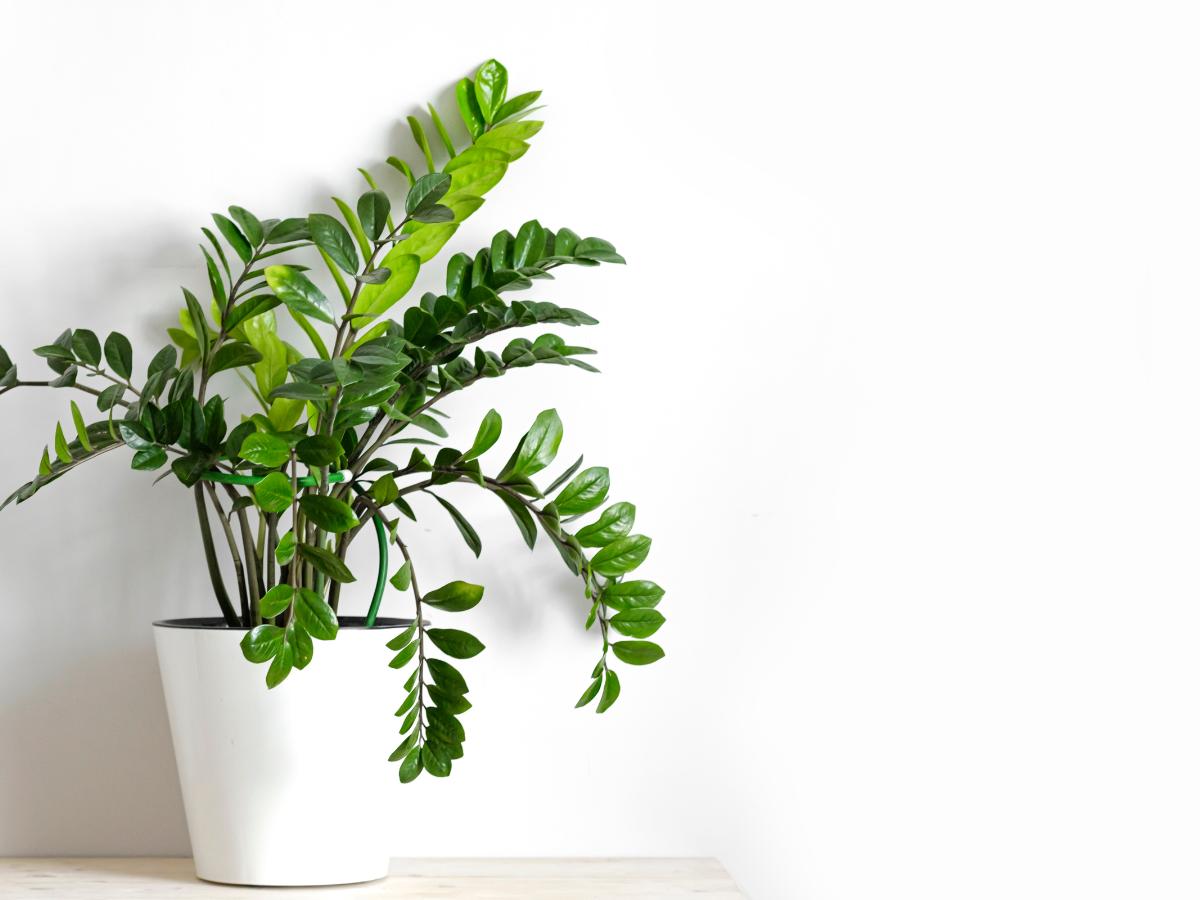
If you’ve been looking for a houseplant for your dresser or nightstand, then the Zamioculcas zamiifolia (ZZ plant) is a must have.
Its bold, upright form and dark, glossy slender leaves with distinct undulating edges make this striking plant a favorite for many plant enthusiasts.
The ZZ plant is very low-maintenance, tolerating extremely low light levels and irregular watering. The plant is also happy to be root bound, so regular repotting won’t be required. This drought-tolerant plant prefers temperatures between 59 – 75℉, and its tall foliage grows up to 3 ft high.
The ZZ plant is also famous for its air-purifying capabilities; you can say goodbye to those harmful compounds in your bedroom, including xylene, ethylbenzene, toluene, and benzene!
Feed your plant with a liquid fertilizer once a month in spring and summer to give it an extra growth boost. If you love to make a statement, go for the Raven ZZ variety—its dark, almost black leaves will instantly become a focal point in your bedroom.
4. Peace Lily
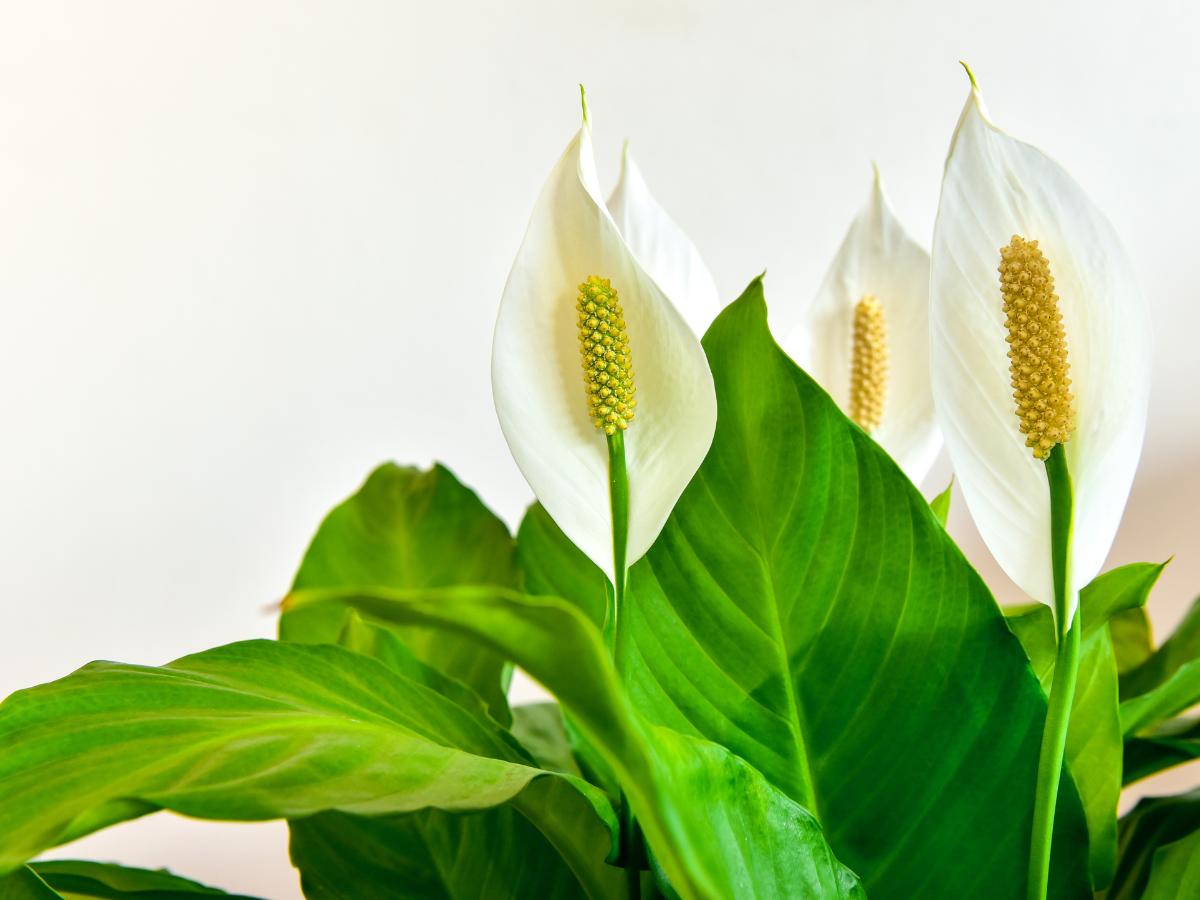
The peace lily’s pure white flowers and glossy tear-shaped leaves make this low-maintenance beauty from the South American tropics one of the most popular indoor plants.
The plant prefers moist soil and has a high transpiration rate that helps humidify the air, promoting better airflow which assists its plant parents breathe better. If you notice drooping leaves, this is a clear indication your plant is thirsty and needs watering.
The peace lily thrives in temperatures between 64 – 75℉ but can tolerate chilly conditions down to 53℉. The plant grows up to 30 in (75 cm) high.
Place your peace lily in a spot with bright, indirect light for the healthiest deep green leaves; however, avoid direct sunlight, as it will scorch the leaves.
5. Pothos
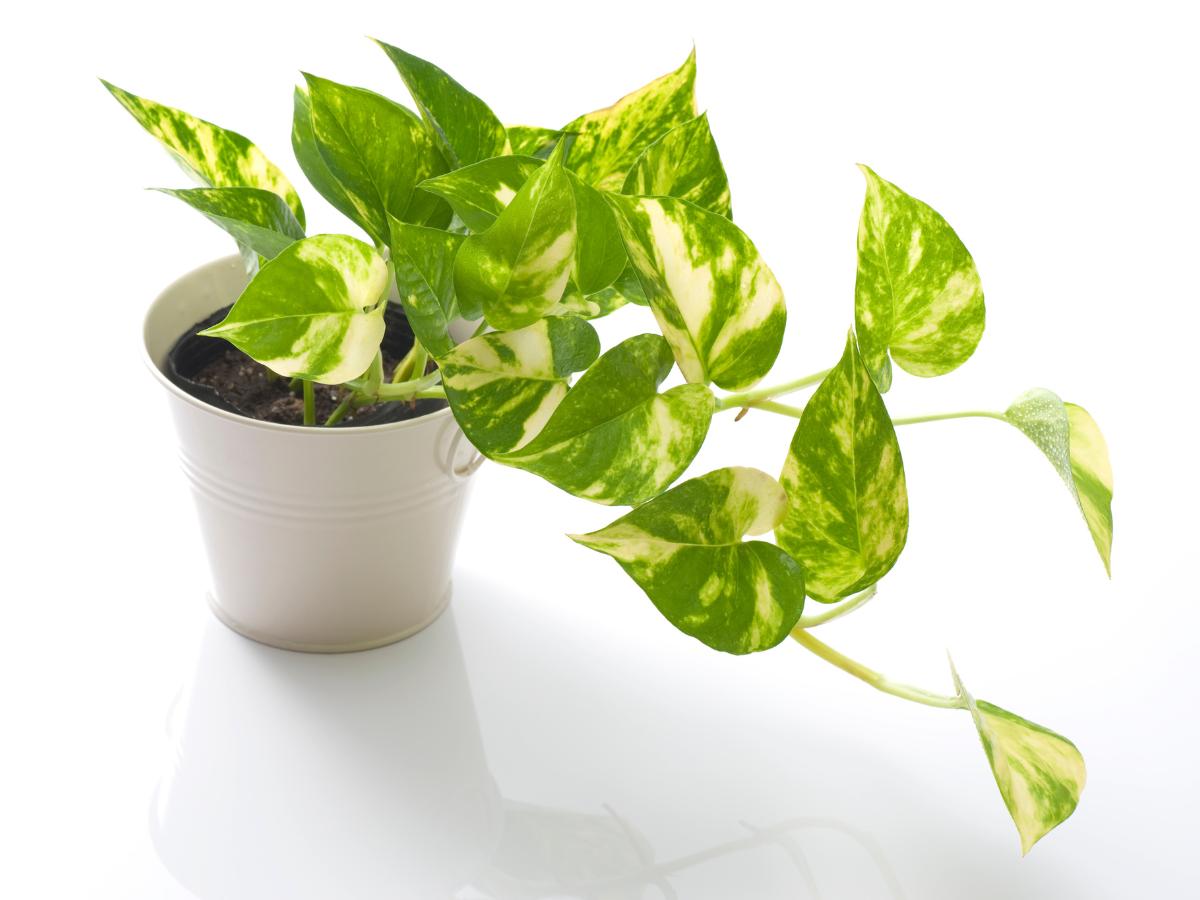
Pothos are low-maintenance plants that can actually thrive on neglect! These prolific, large-leaved climbers have fleshy stems that can reach up to 65 ft (20 m) when grown outdoors but will likely have a much lower height indoors; you can trim them if necessary.
There are numerous different foliage colors to choose from, ranging from solid dark green to bright neon green. There are also variegated varieties whose leaves have streaks of white, yellow, and even shades of silver that are sure to add real impact in your bedroom!
Pothos prefer humid conditions, but you should only water your plants when the top two inches of the soil are dry. They thrive in room temperatures ranging from 50 – 73℉ (10 – 24℃). If you notice the leaves curling, your plant is probably thirsty. As for the yellowing of leaves, this is a sign of overwatering or underwatering.
6. Philodendron
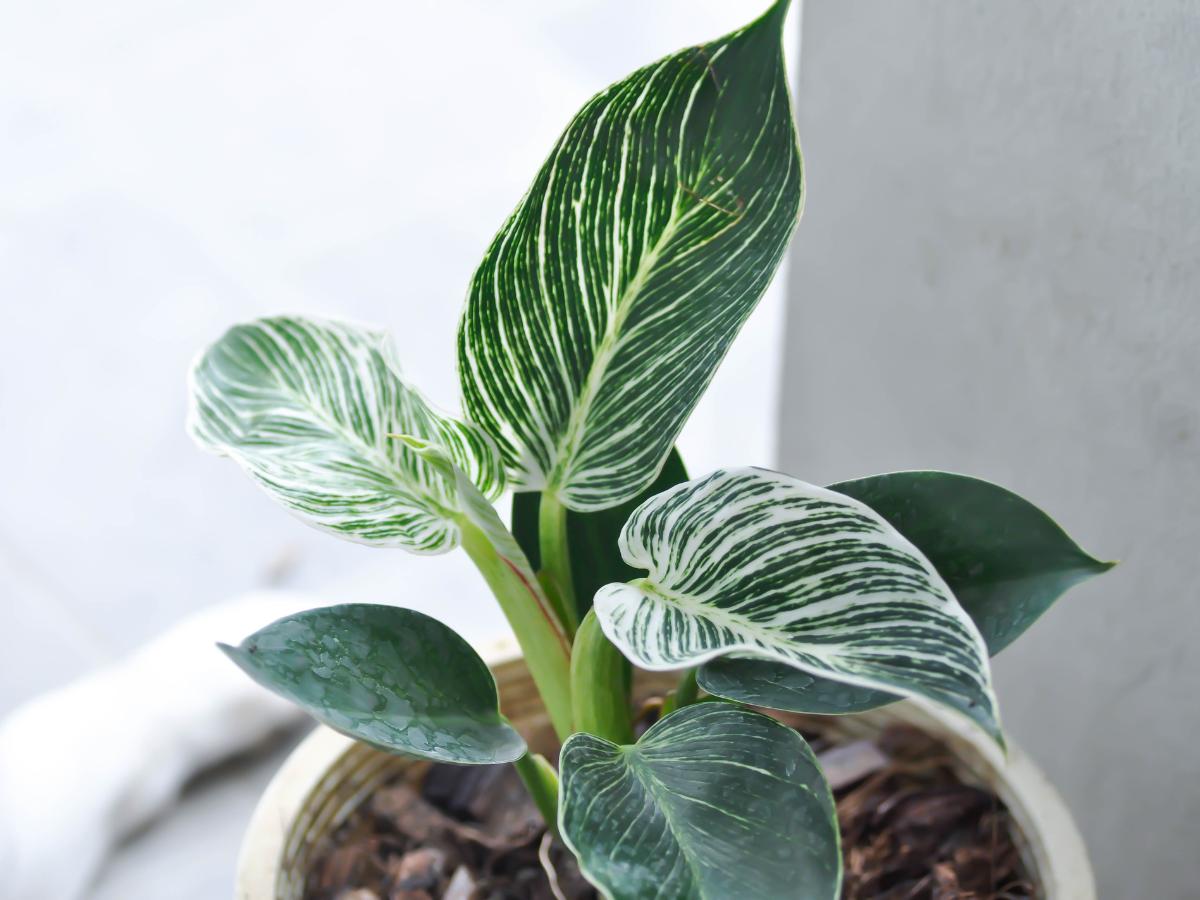
Philodendrons are large-leaved climbers that hail from the Caribbean—if you want a tall, upright plant that won’t feel invasive, look no further! This plant prefers bright light but can also tolerate a bit of shade.
If you have a mossy pole, you can train this natural and prolific climber, or use it in a raised planter for a stunning look. Philodendrons thrive in various humidity levels, but high humidity environments help them develop larger leaves.
Another way to increase these plants’ foliage is by pinching out leaf nodes on single stems. This promotes more branches and off shoots, resulting in more leaves.
This plant can grow up to 13 ft, so trimming may be required based on your preferences. Philodendrons thrive in temperatures between 60 – 75℉ (15 – 24℃), and since they prefer humid environments, they’ll benefit from occasional misting.
With at least over 480 species of philodendron, finding a variety that suits you is easy peasy!
7. Snake Plant
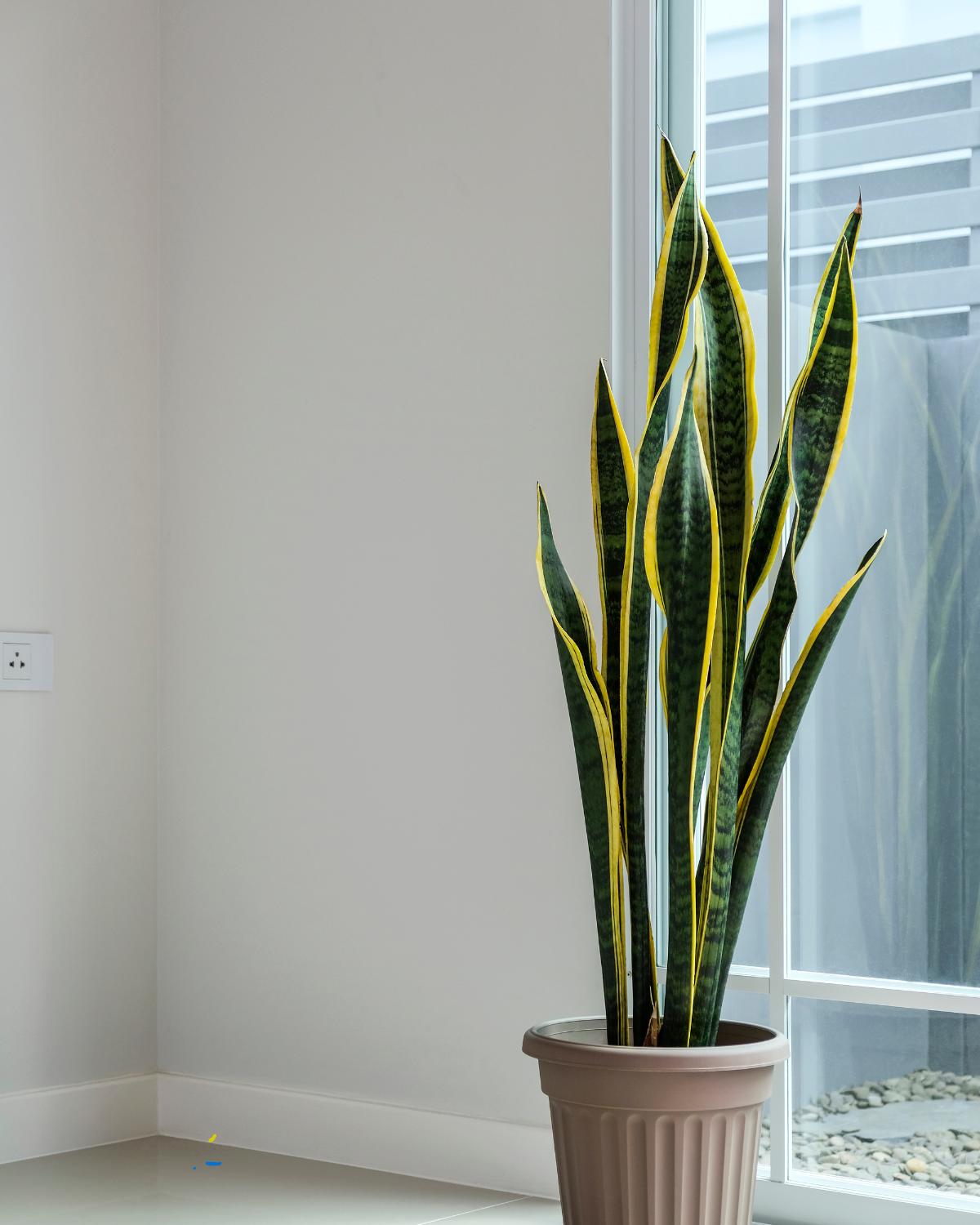
The snake plant’s striped and twisting sword-like foliage is a lovely addition to any bedroom. Also called mother-in-law’s tongue, the snake plant’s excellent drought-tolerant capabilities has made it a popular houseplant for decades.
Even better news, there are numerous varieties to choose from, such as Masoniana and trifasciata varieties, which can grow up to 3 – 4 ft (91 – 121 cm) high, and dwarf varieties like Sansevieria fischeri, which reach 16 inches (40 cm).
Snake plants have a relatively slow growth rate, with brighter conditions encouraging faster growth; they can also cope with low-light conditions. These plants are also pretty easy to propagate.
Water once weekly during spring and summer, but change the regimen to once monthly in fall and winter, as the plant will be dormant. Snake plants will die if exposed to temperatures below 50℉ or frost.
These plants are well known for their air-purifying qualities which are believed to promote better sleep, making them a perfect choice for your bedroom!
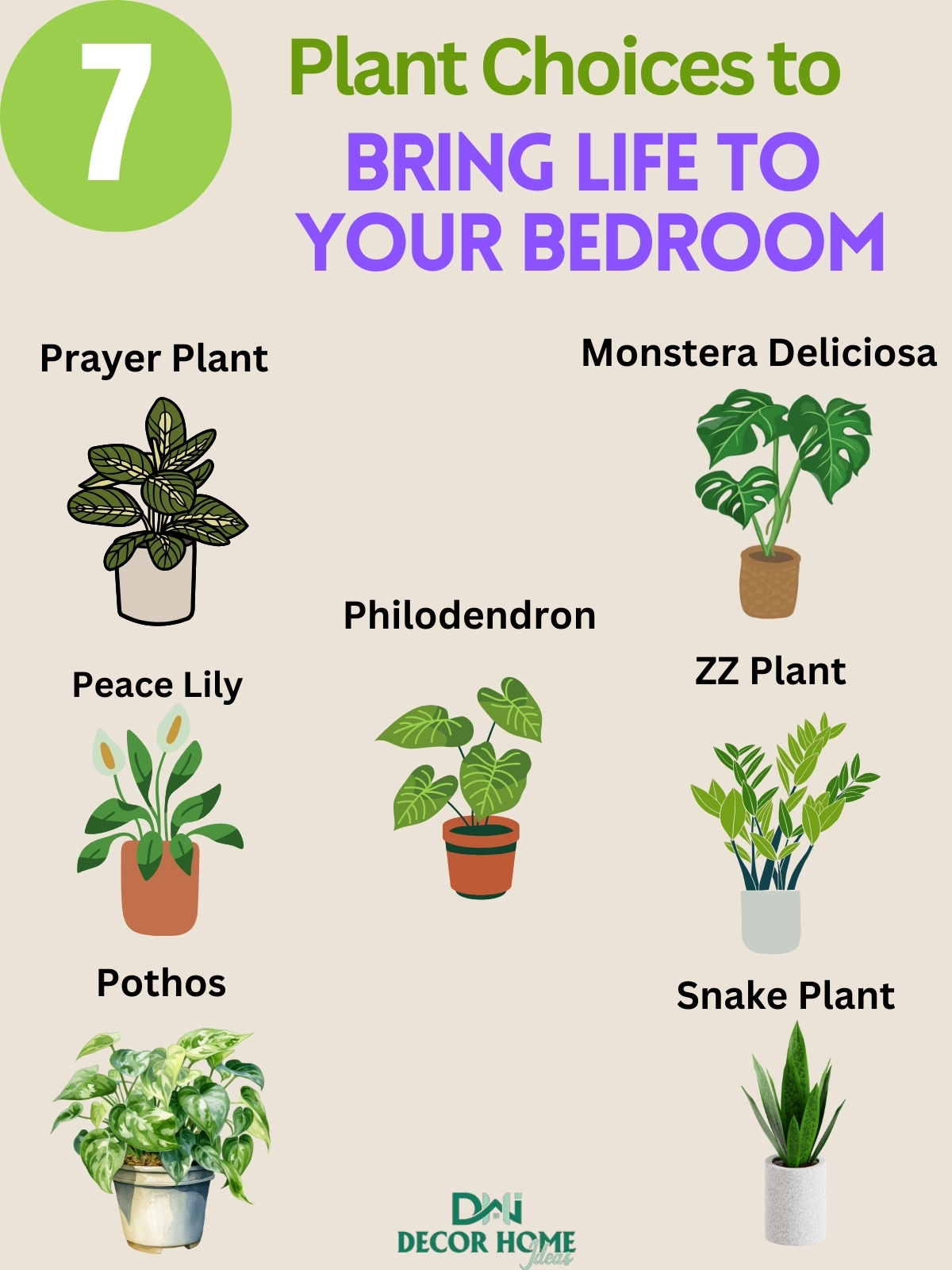
Enhance your bedroom’s ambiance with these air-purifying and low-maintenance plants.
The snake plant and ZZ plant thrive in low light, while the peace lily adds elegance and filters toxins.
Pothos and philodendrons bring trailing greenery, and the prayer plant adds unique patterned leaves. Monstera deliciosa creates a bold statement, making your space feel fresh and vibrant!

